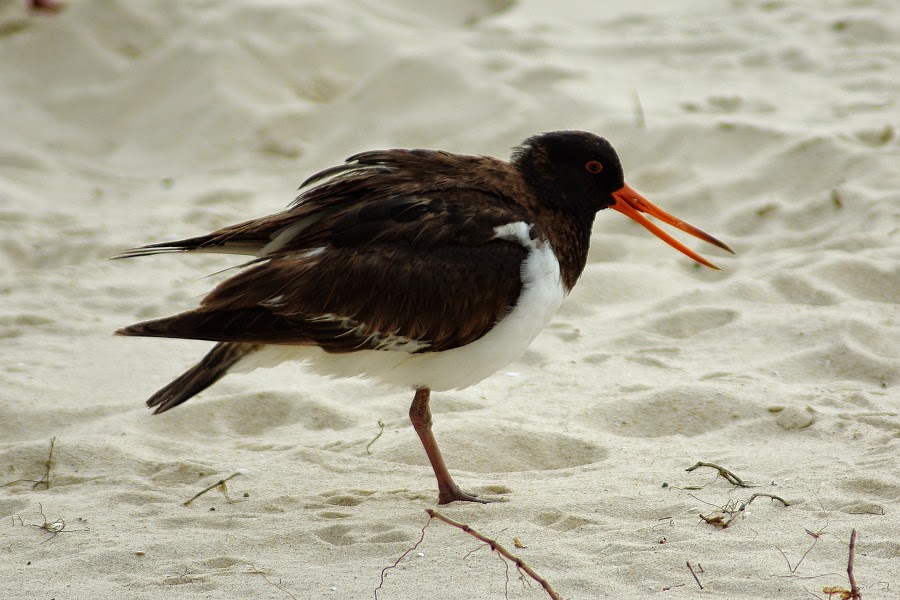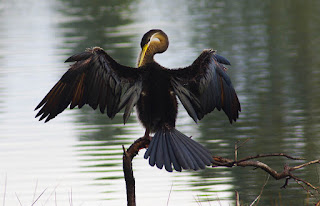The name Oystercatcher is something of misnomer for this species, because they seldom eat oysters which are found mainly on rocky coastlines.
The Pied Oystercatcher is black with a white breast and belly. All oystercatchers have a bright orange-red bill, eye-rings and legs, and a red eye. Young birds are similar in appearance to the adults, but lack the intense red-orange colours, and are brown rather then black.
The white breast and belly distinguish the Pied Oystercatcher from the closely related Sooty Oystercatcher, which has all black plumage.
The bird is found in coastal areas throughout Australian continent except for areas of unbroken sea cliffs such as the Great Australian Bight. Pied Oystercatchers have probably declined throughout much of their range and the current population may be as low as 10.000. Closely related forms are found in almost every continent in the world.
The Pied Oystercatcher prefers mudflats, sandbanks and sandy ocean beaches and is less common along rocky or shingle coastlines. Although rarely recorded far from the coast, the Pied Oystercatcher may occasionally be found in estuarines mudflats and short pasture.
The Pied Oystercatcher breeds in pairs. Abreeding teritory of some 200m is formed and is defended by both birds. Nesting takes place on sand, shell grit or shingle just above high water mark on beaches, sandbars, margins of estuaries and lagoons. The eggs are well-camouflaged, being pale brown with darker-brown and black blotches and streaks. Both sexes share parenting duties.
Photo- Jozef Skubin, 1,2,3,4, Walter point, Swan River. 29.06.2014
Text references.
Handbook of Australian, New Zealand and Antarctic Birds.
The Shorebirds of Australia






























